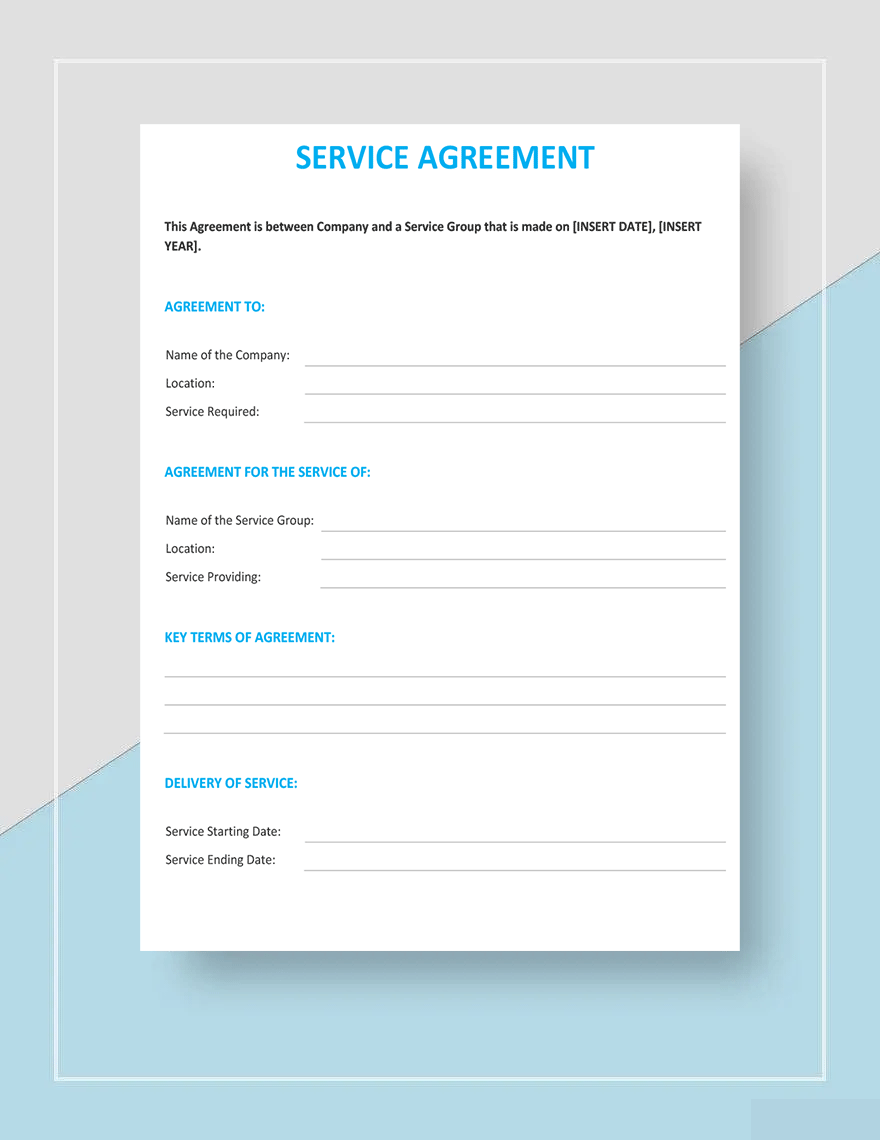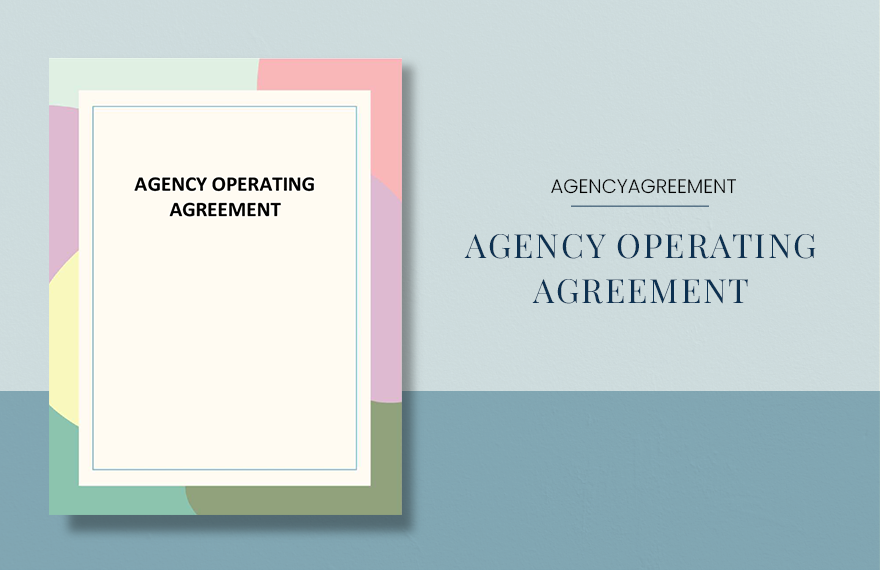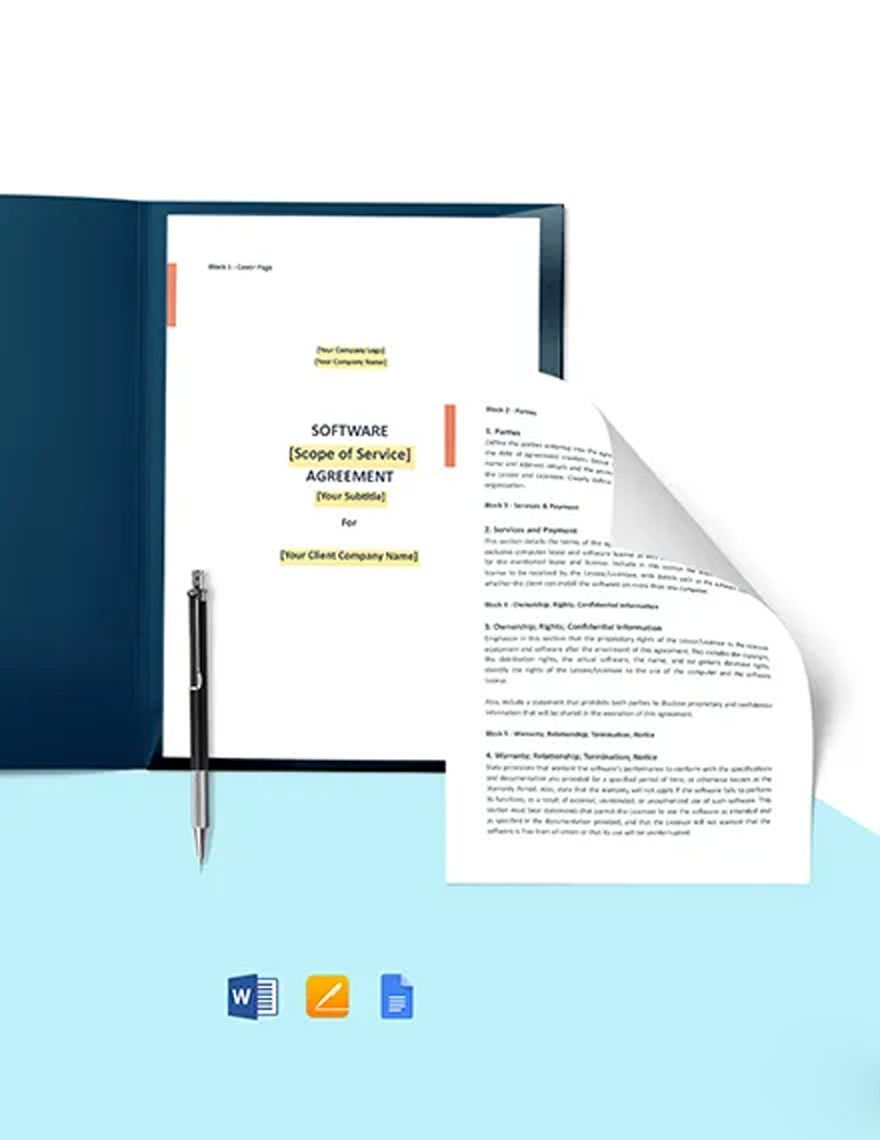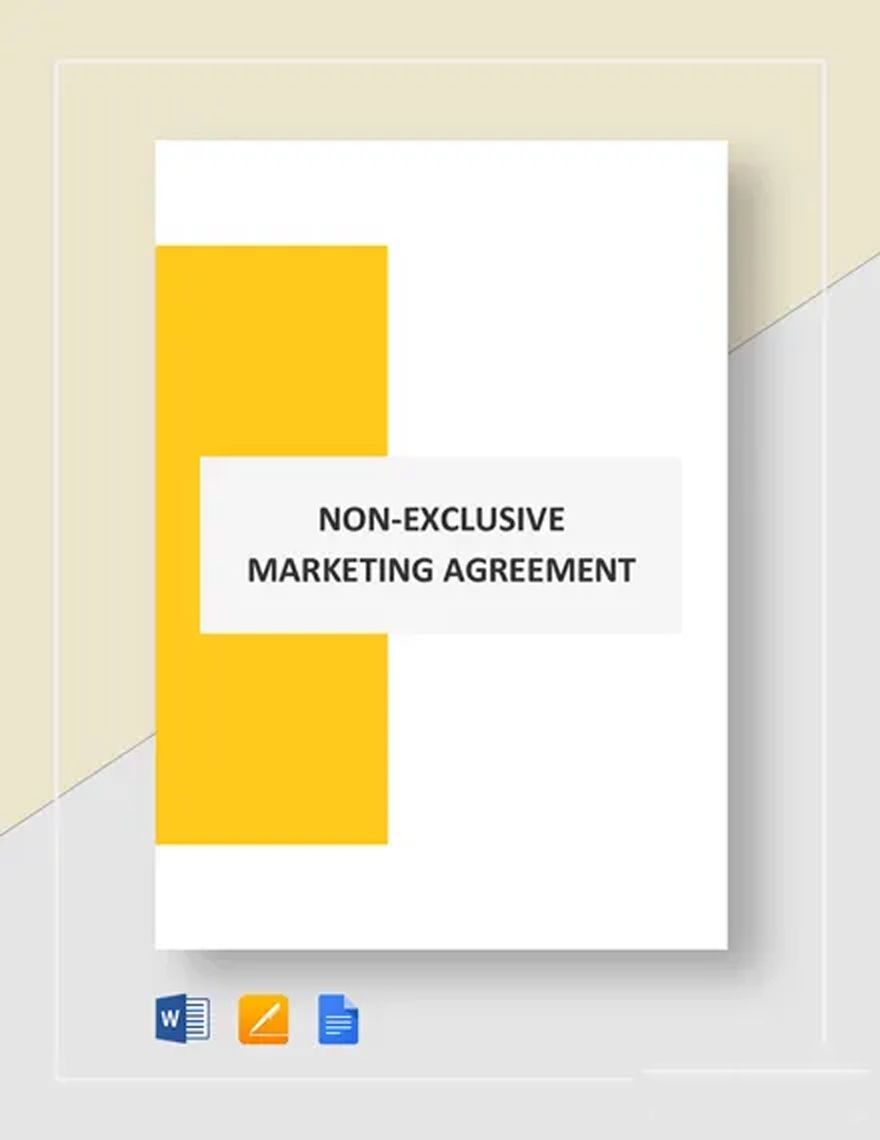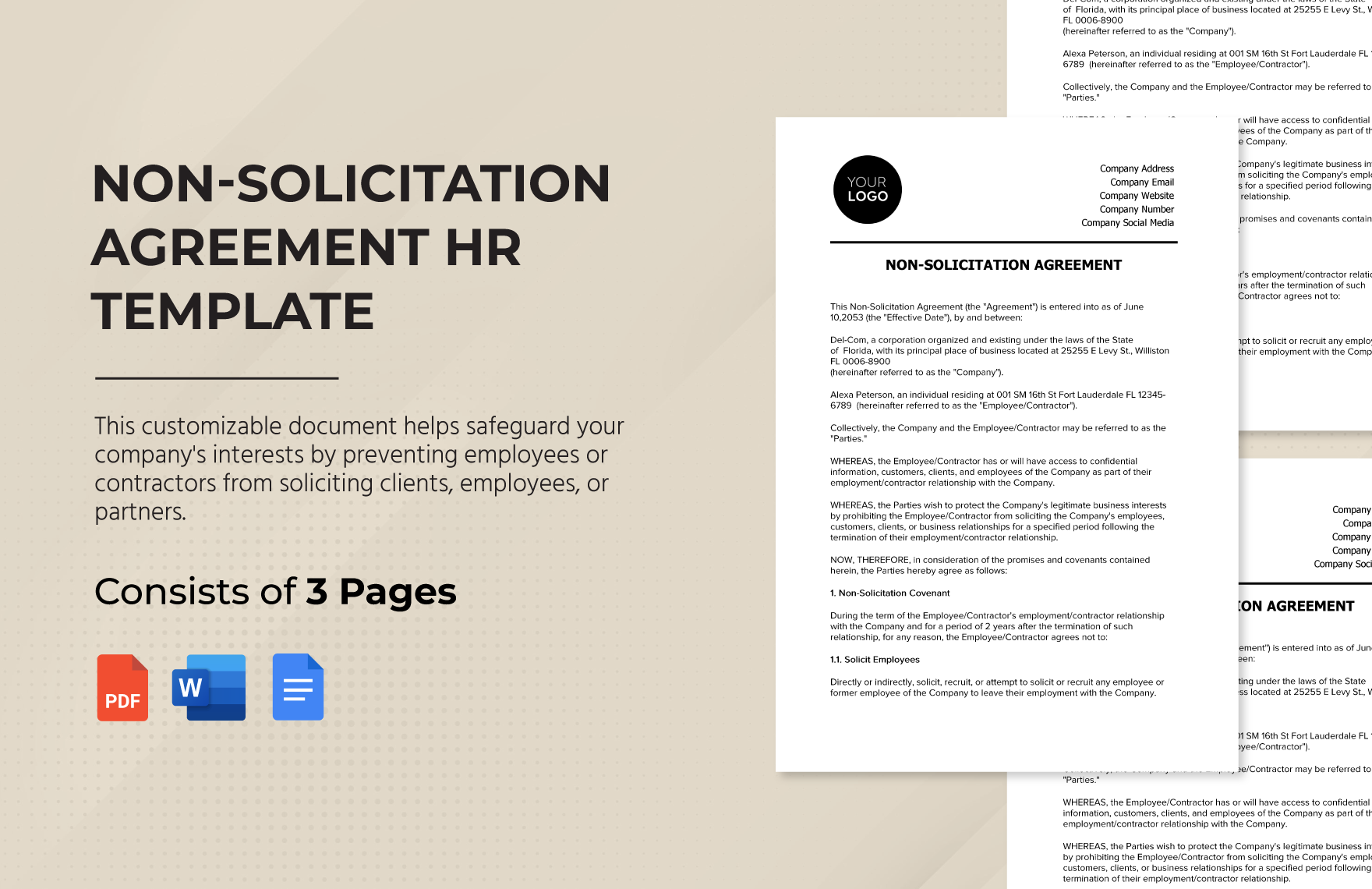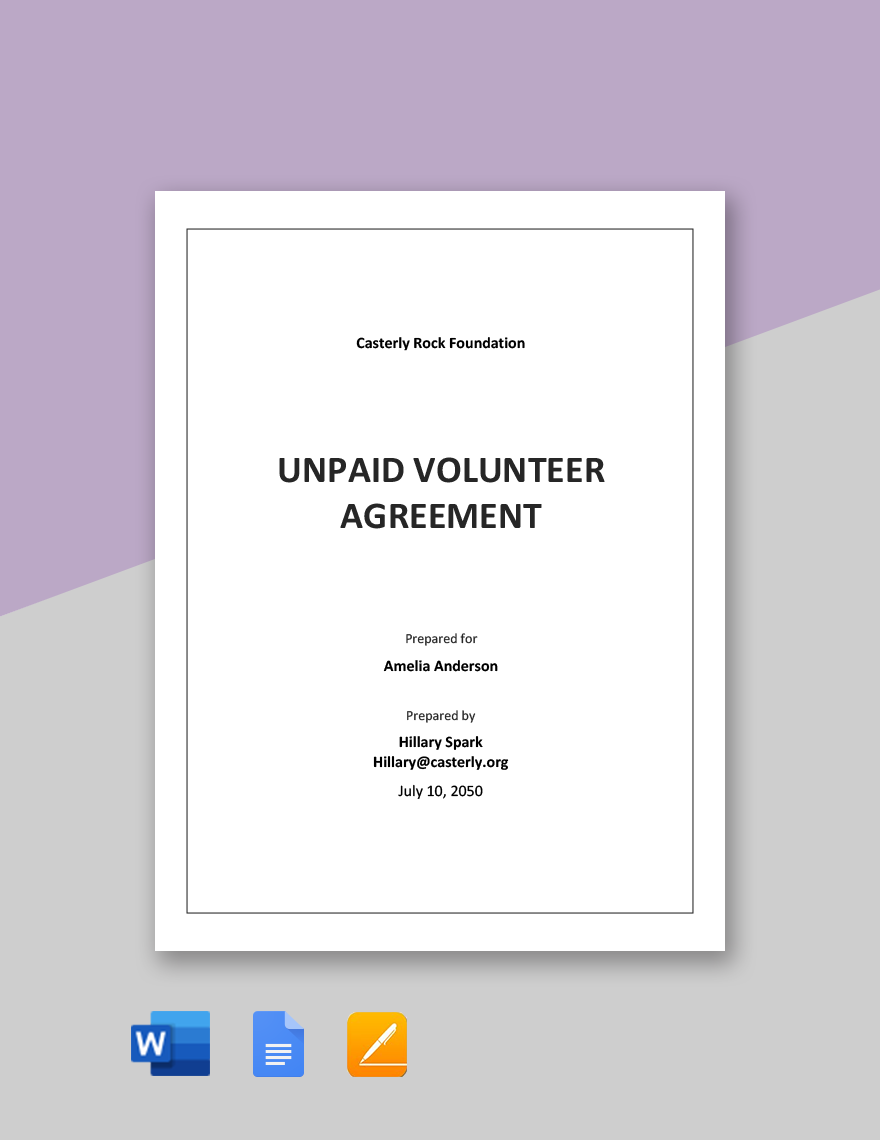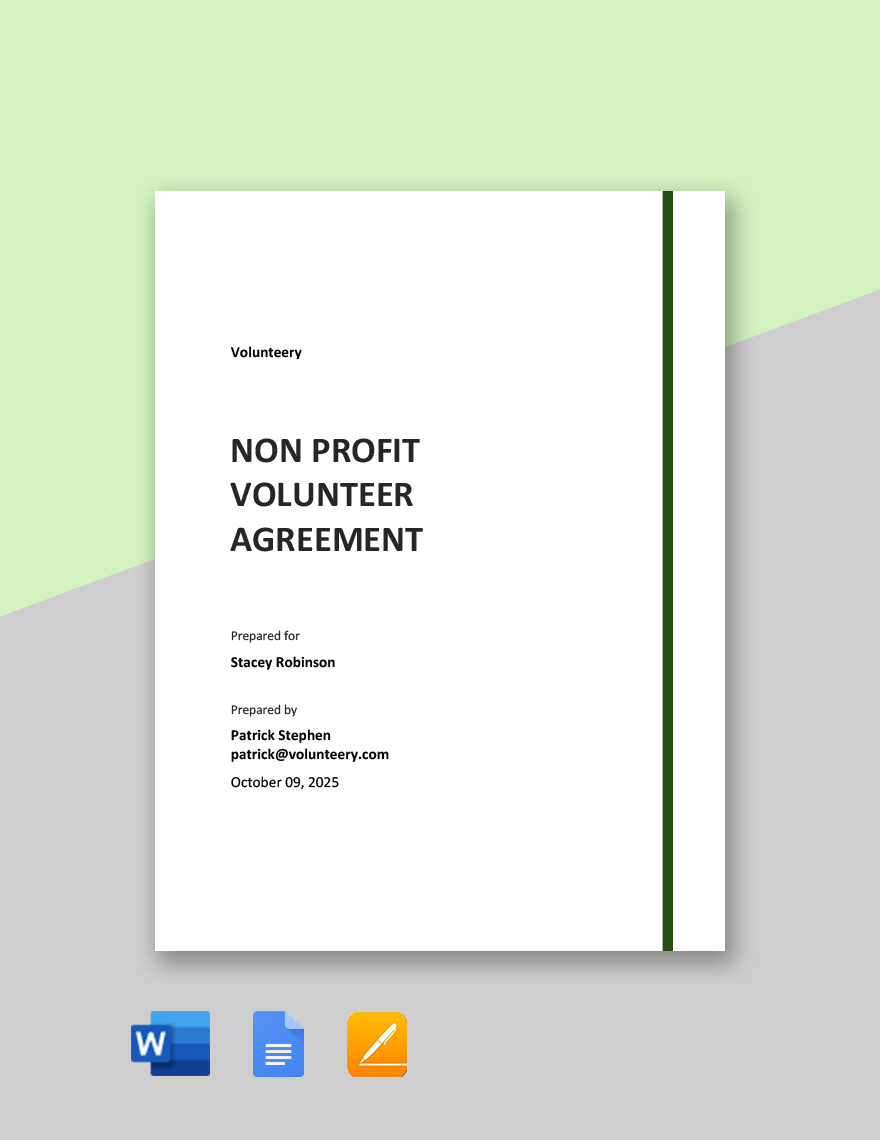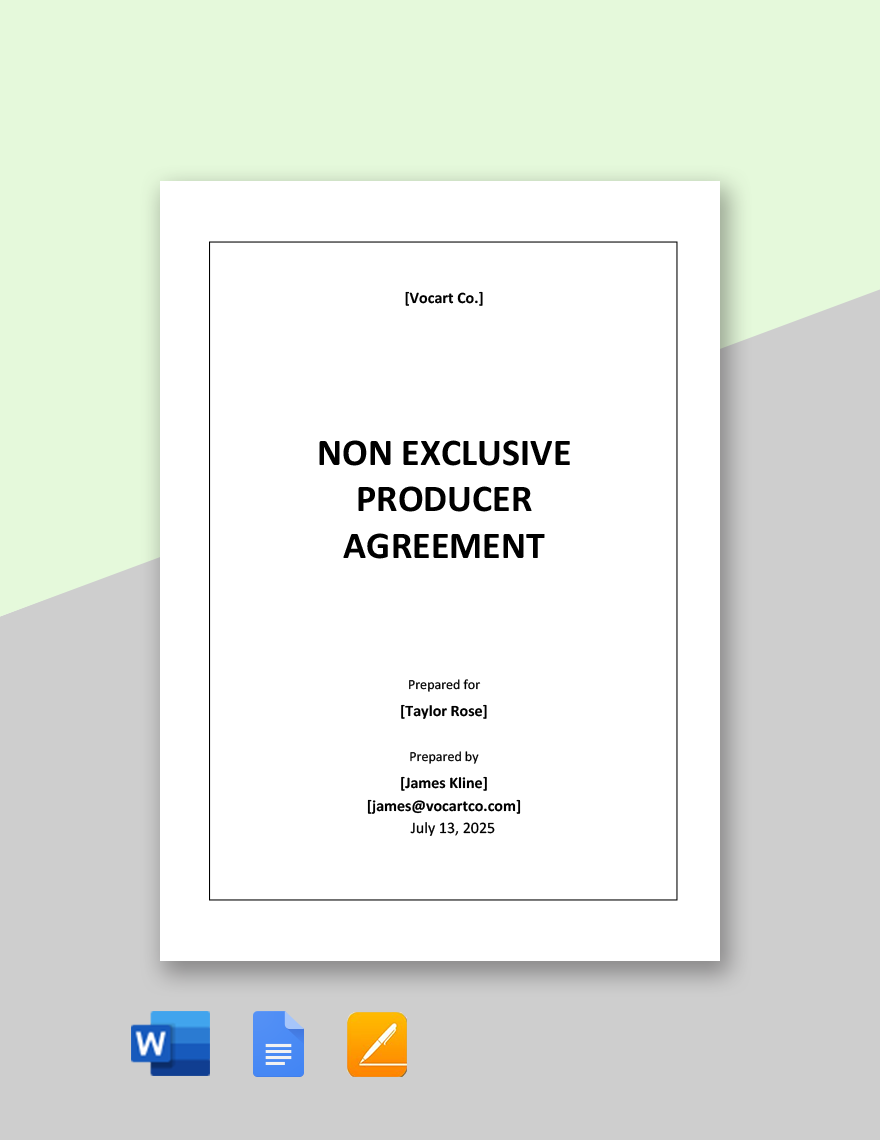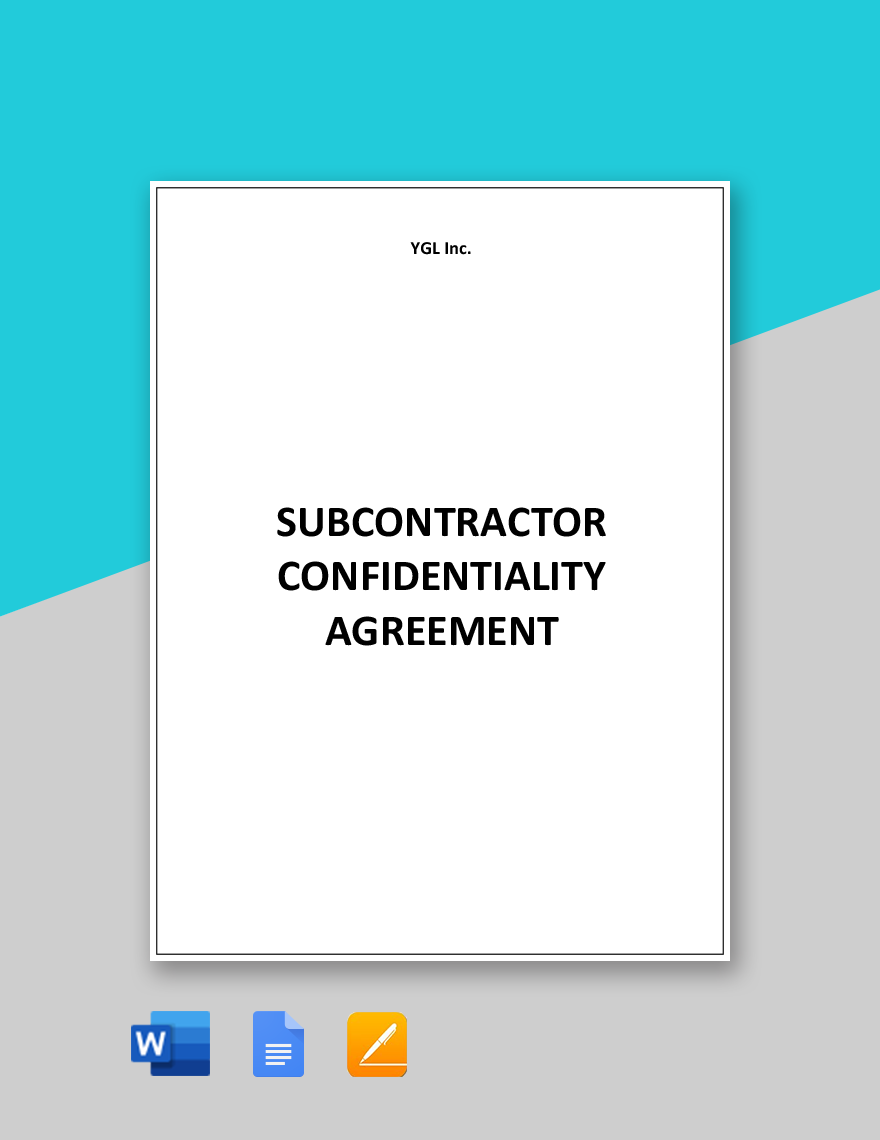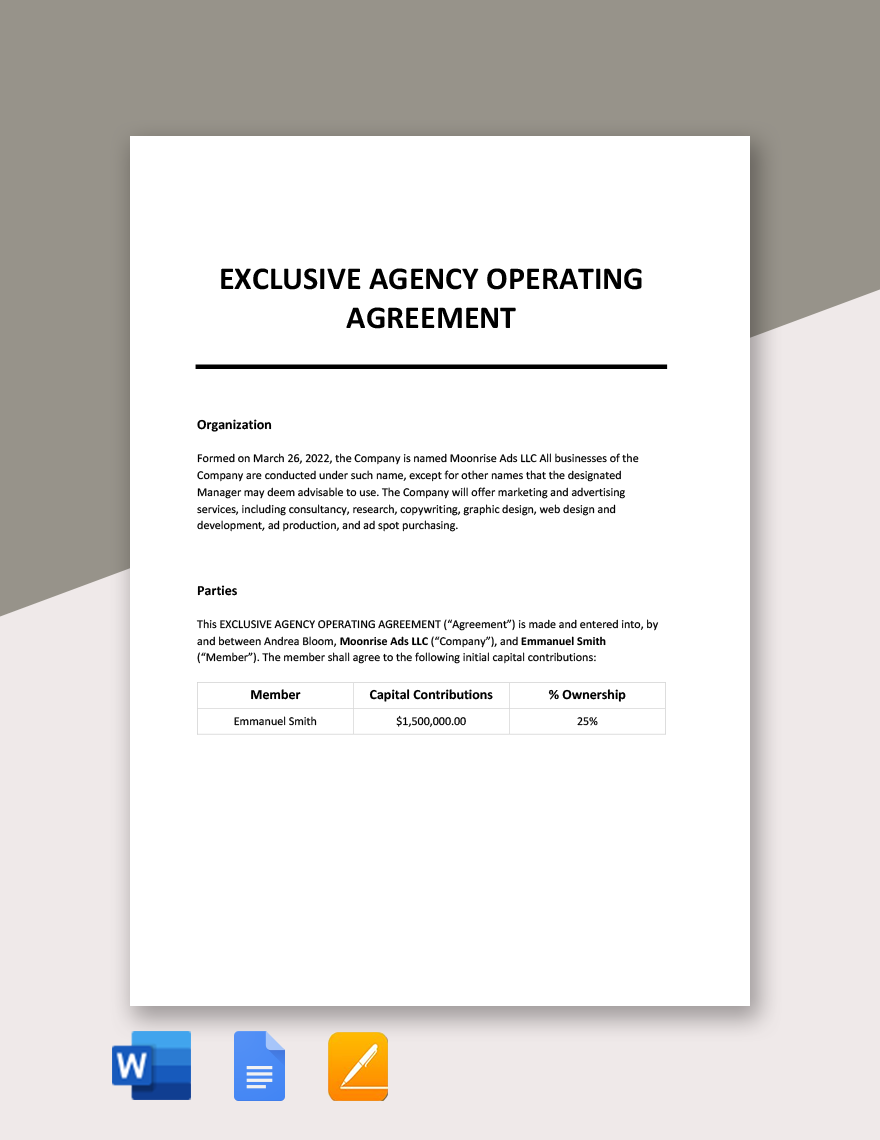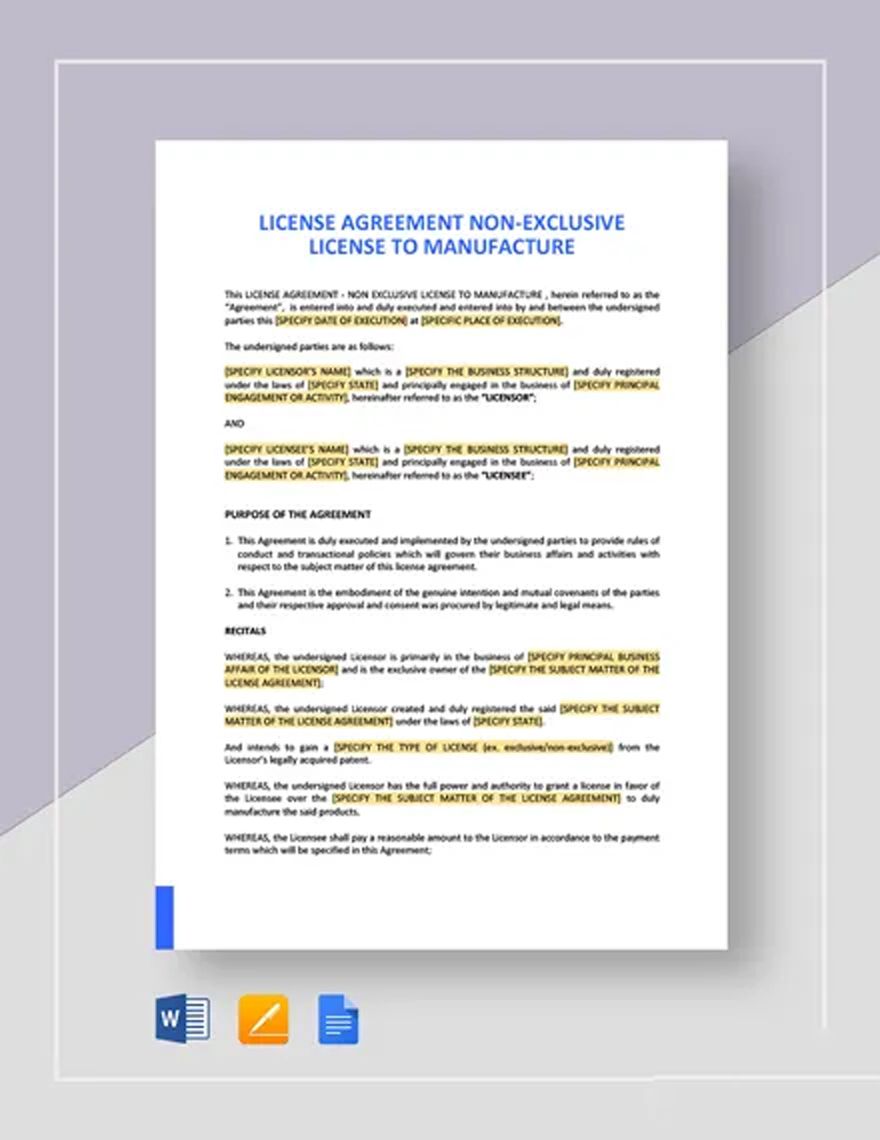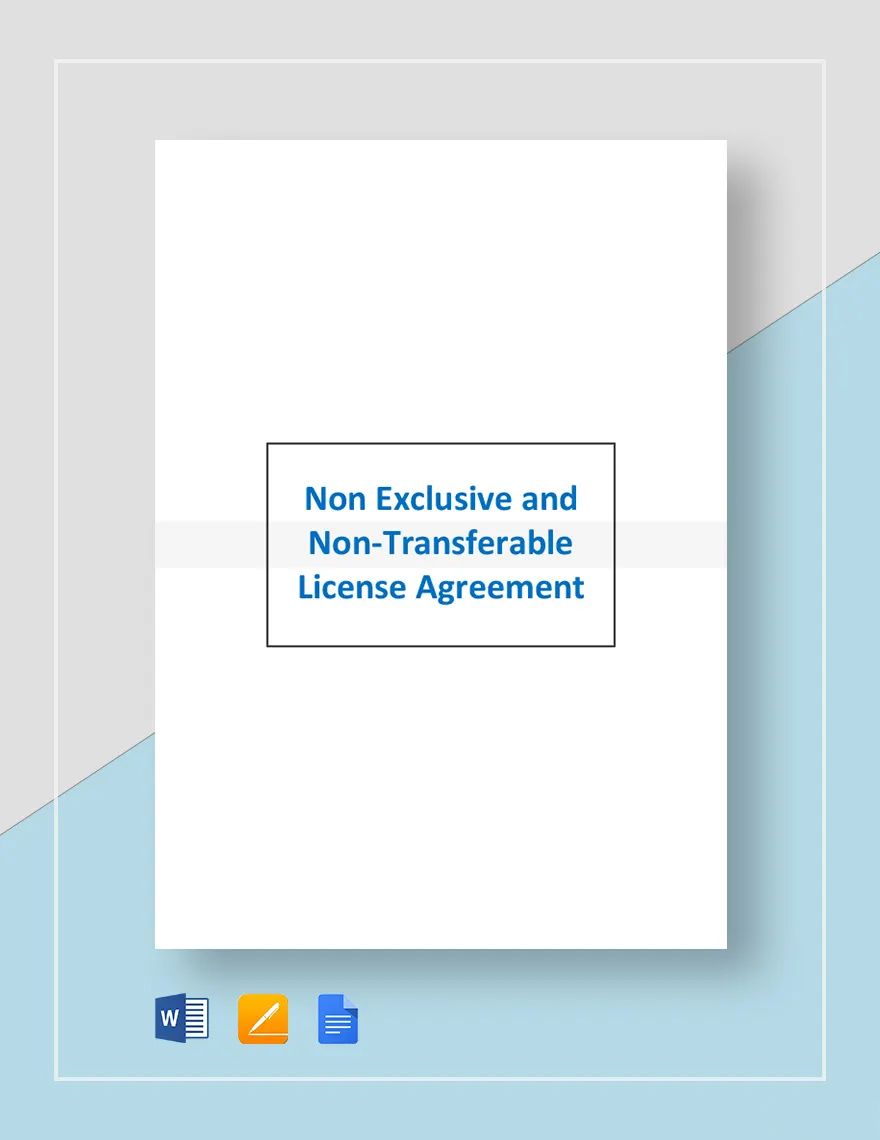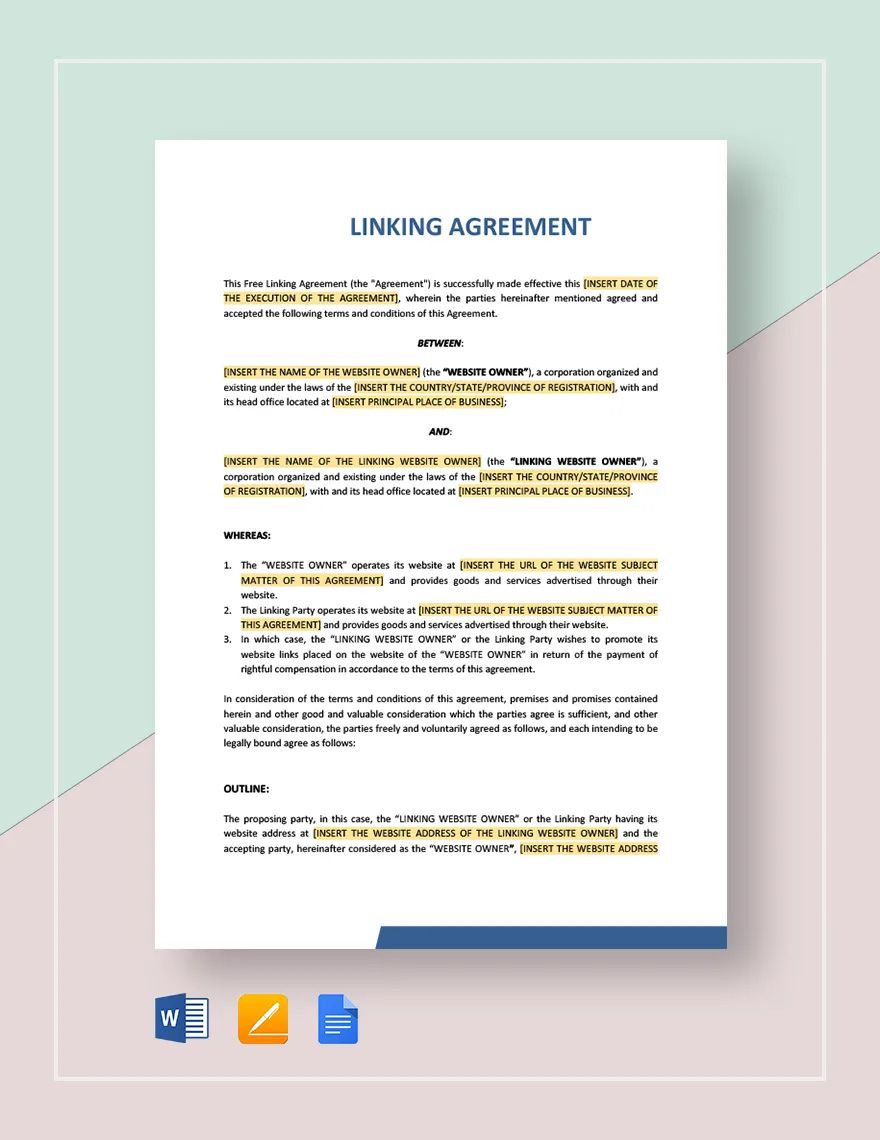Do you want to increase opportunity and total market coverage for your product or intellectual property? Improve the odds of a successful sale by having your own non-exclusive agreement. However, you don't need to start from a blank page, you can download here at Template.net Pro a variety of professionally written and printable Non-exclusive Agreement Templates. Our templates are guaranteed 100% customizable that can be accessed through your favorite programs like Google Docs, MS Word, and Apple Pages. What are you waiting for? Click download and own our premium non-exclusive agreement templates now!
What Is a Non-Exclusive Agreement?
A non-exclusive agreement implies that two parties agree on the provision of products or services yet the distributor can also contract the same products and services to other businesses. This agreement is the opposite of the purpose of an exclusive agreement, wherein the products or services can only contract one company until the end of the contract. In other words, non-exclusive agreements enable rivals authority to market and distribute the goods and services while the exclusive agreements exclude competitors for a period of time. A type of non-exclusive agreement is the non-exclusive license agreement. In this agreement, the licensor permits the licensee to use his/her intellectual property (copyrights, patents, and trademarks) in exchange for a negotiated compensation. Exclusive and non-exclusive licenses refer to the degree of exclusivity that a licensee will be granted.
How to Write a Non-Exclusive Agreement?
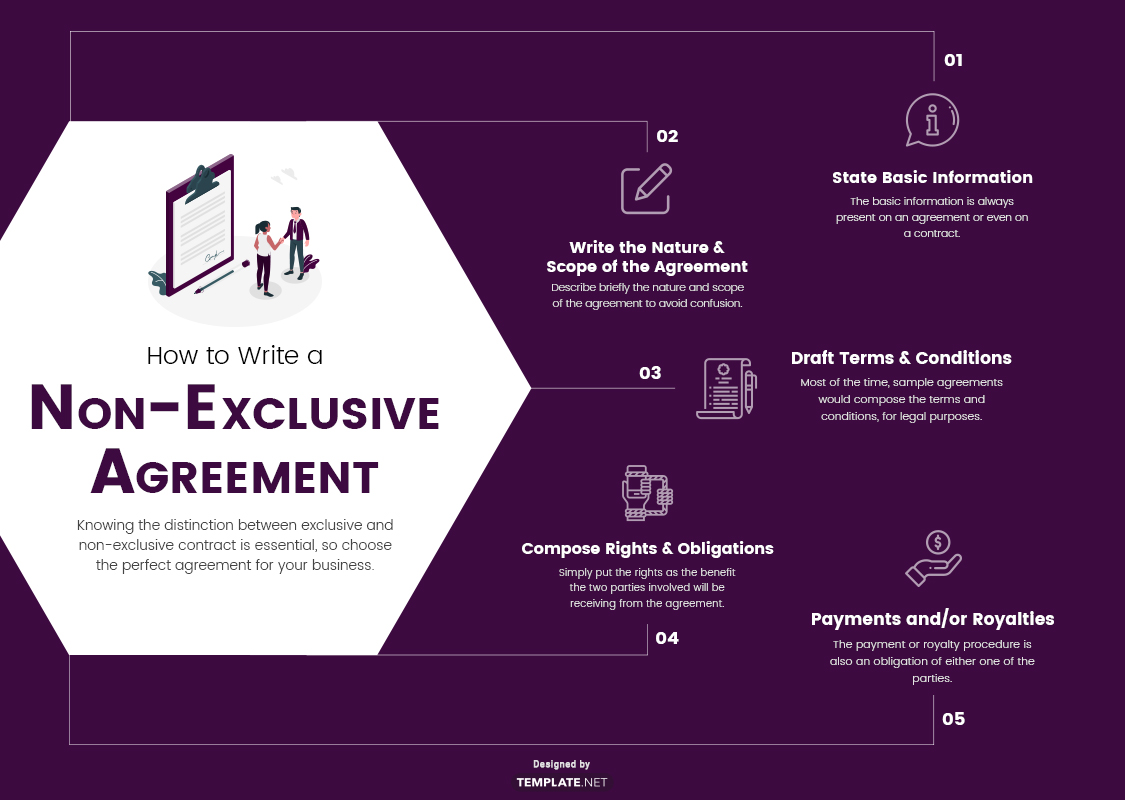
Knowing the distinction between exclusive and non-exclusive contracts is essential, so choose the perfect agreement for your business. A non-exclusive agreement can be a very detailed contract that includes a lot of stipulations depending on what type of non-exclusive agreement you are drafting. Nevertheless, we have summed up the five basic steps to making a solid simple agreement.
1. State Basic Information
The basic information is always present on an agreement or even on a contract. And when you say the basic information in an agreement, it meant the name of the company, agency, broker, or supplier and their address or operating location. It includes the name of the distributor, model, or vendor and their address as well. Many contracts and agreements would state on the clause that only the parties who signed the contract can enforce its terms. Therefore, always specify the exact name of the involved parties. Also, do not forget to put the start and end date to the validity of the contract.
2. Write the Nature and Scope of the Agreement
Describe briefly the nature and scope of the agreement to avoid confusion. The nature and scope of an agreement referred to the services that are expected from the contract. Clearly defining the scope of your basic agreement will help either of the parties know what exactly they are going to distribute.
3. Draft Terms and Conditions
Most of the time, sample agreements would compose the terms and conditions, for legal purposes, together with the distributor, broker, or licensor. Some terms and conditions would include what products and services can be sold and where it can be sold. List down the terms you have in mind about the promotion of your product and service and other related distribution and licensing matters to the agreement. Always keep it in a formal and professional manner. Use simple language or descriptive sentences for easier communication between two parties.
4. Compose Rights and Obligations
Always compose the rights and obligations of both owner and distributor. Simply put the rights as the benefit the two parties involved will be receiving from the agreement. Meanwhile, the obligations are the duties that each party are responsible for under the agreement. Either of the parties can claim a breach of contract when one of the involved parties the obligations according to the agreement.
5. Payments and/or Royalties
The payment or royalty procedure is also an obligation of either one of the parties. This section will tackle how much will be paid or how much royalty the other will receive. The payment or royalty method can be inserted in the obligations section of the agreement but it is recommended to give it a section of their own. Most businesses run because of profit, therefore, they would always negotiate the payments where they could gain profit. Royalties can be earned through the percentage of revenue that is generated from the property. Royalties are only applicable to licensed properties like copyrighted music, the distribution of books, patented products.
